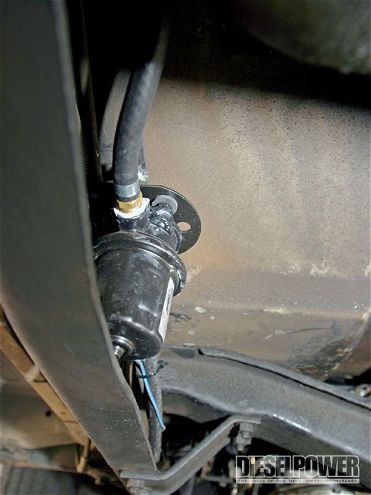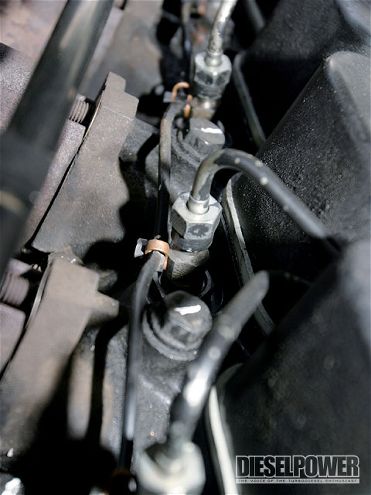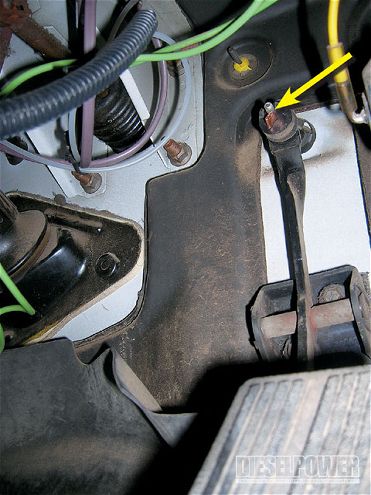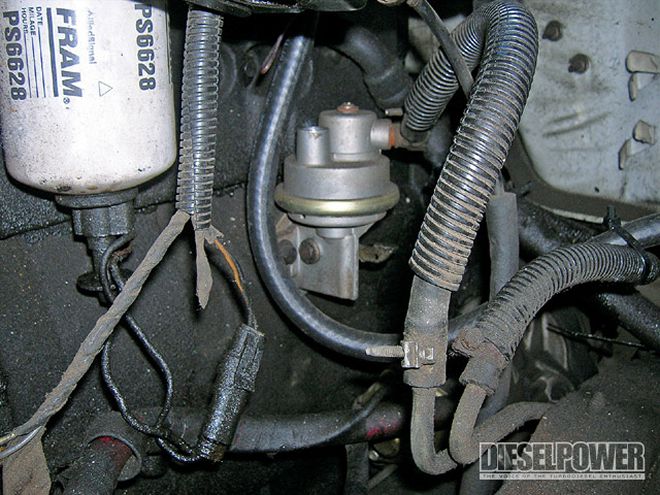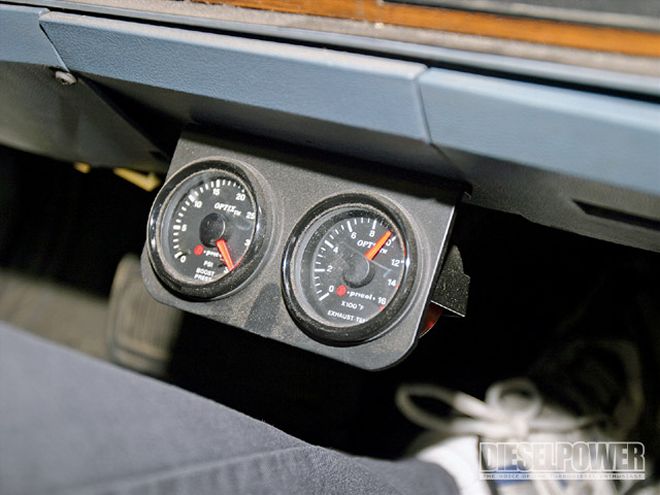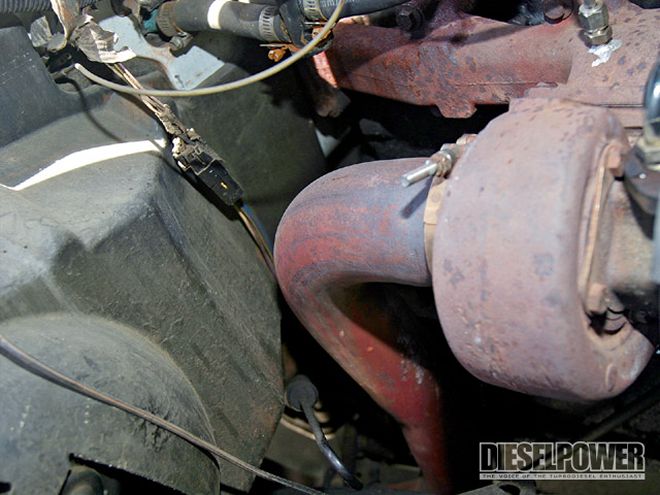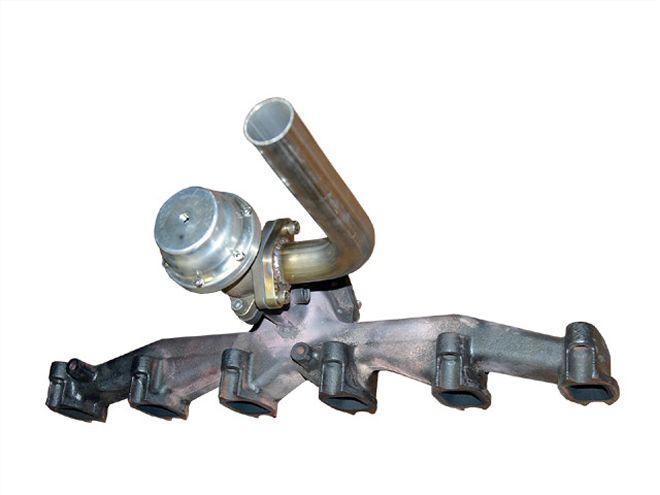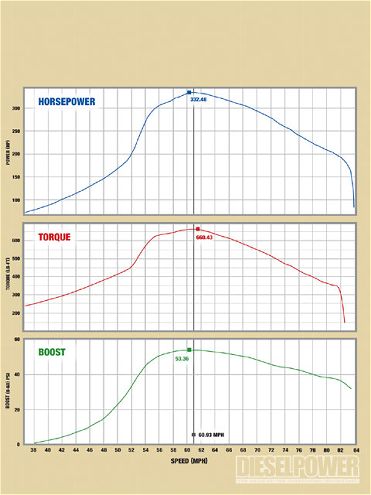1989 Dodge Ram D250 Buildup - Rust Bucket Recession
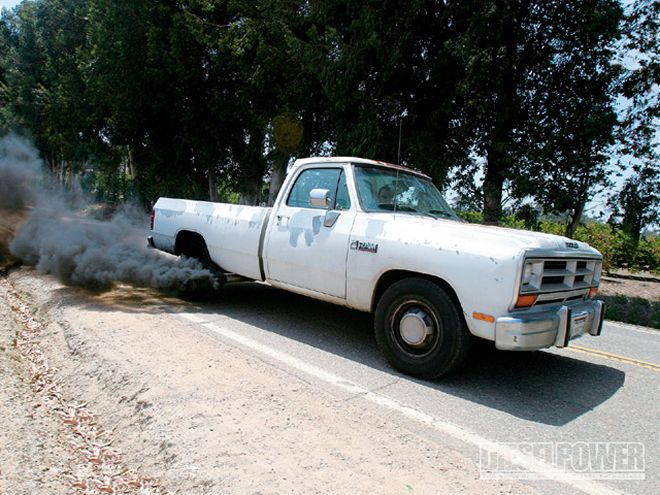
| 1989 Dodge Ram D250 Buildup right Side Angle
Our newest round of modifications is where we're really going to give 'er hell. We stepped up to 6x0.016 injectors from New Era diesel, added a Carter electric lift pump, and fiddled with the throttle linkage to ensure full travel. The result? The horsepower on our '89 Dodge actually went down, from 339 rear-wheel horsepower, to 332. Granted the day was hotter and our nitrous pressure was lower, but still, we were looking for more like 400 hp, and instead we didn't even make it to the mid 300s.
We had our theories as to why this was. On the fuel side of the coin, the injectors from New Era were doing their job--we could make the truck smoke like a train, and our EGTs could hit our self-imposed maximum of 1,600 degrees in Second gear. The air was also keeping up. In fact, we were about to send our turbo back to High Tech Turbo in pieces, as we were seeing an insane 54 psi of boost on the dyno. So more fuel and 20 psi more boost equals slightly less power? How could this be?
First of all, our truck is still using the stock fuel timing, and even with the bigger injectors, it appears the extra fuel is just generating more heat rather than more power--much like the newer diesel particulate filter-equipped trucks do in regen mode. Second, 54 psi is way more than what this turbocharger was ever designed for. After talking with the guys at High Tech Turbo, they said anything greater than 40 psi will just create hot air, there would be no real horsepower gain, and we would be in danger of turbocharger failure. Reason number three is a combination of ridiculously high drive pressures (probably 80 to 100 psi versus an ideal of 50 to 60 psi) along with our stock 3-inch downpipe. This is creating an exhaust-side restriction and limiting our horsepower potential.
So our current plan of action is to install a wastegate, and cross our fingers that it will make a difference. Our drive pressures will be down, and our 3-inch downpipe will have a lower volume of exhaust gases to deal with, since some of it will be vented through the wastegate. After that, we'll adjust the timing, throttle linkage, and fuel pin, in hopes of gaining more power. As for now, we'll just have to be happy our power loss wasn't greater than it was, our truck is still in one piece, and that we're learning.
 | 1989 Dodge Ram D250 Buildup right Side Angle
Our newest round of modifications is where we're really going to give 'er hell. We stepped up to 6x0.016 injectors from New Era diesel, added a Carter electric lift pump, and fiddled with the throttle linkage to ensure full travel. The result? The horsepower on our '89 Dodge actually went down, from 339 rear-wheel horsepower, to 332. Granted the day was hotter and our nitrous pressure was lower, but still, we were looking for more like 400 hp, and instead we didn't even make it to the mid 300s.
We had our theories as to why this was. On the fuel side of the coin, the injectors from New Era were doing their job--we could make the truck smoke like a train, and our EGTs could hit our self-imposed maximum of 1,600 degrees in Second gear. The air was also keeping up. In fact, we were about to send our turbo back to High Tech Turbo in pieces, as we were seeing an insane 54 psi of boost on the dyno. So more fuel and 20 psi more boost equals slightly less power? How could this be?
First of all, our truck is still using the stock fuel timing, and even with the bigger injectors, it appears the extra fuel is just generating more heat rather than more power--much like the newer diesel particulate filter-equipped trucks do in regen mode. Second, 54 psi is way more than what this turbocharger was ever designed for. After talking with the guys at High Tech Turbo, they said anything greater than 40 psi will just create hot air, there would be no real horsepower gain, and we would be in danger of turbocharger failure. Reason number three is a combination of ridiculously high drive pressures (probably 80 to 100 psi versus an ideal of 50 to 60 psi) along with our stock 3-inch downpipe. This is creating an exhaust-side restriction and limiting our horsepower potential.
So our current plan of action is to install a wastegate, and cross our fingers that it will make a difference. Our drive pressures will be down, and our 3-inch downpipe will have a lower volume of exhaust gases to deal with, since some of it will be vented through the wastegate. After that, we'll adjust the timing, throttle linkage, and fuel pin, in hopes of gaining more power. As for now, we'll just have to be happy our power loss wasn't greater than it was, our truck is still in one piece, and that we're learning.
| 1989 Dodge Ram D250 Buildup right Side Angle
Our newest round of modifications is where we're really going to give 'er hell. We stepped up to 6x0.016 injectors from New Era diesel, added a Carter electric lift pump, and fiddled with the throttle linkage to ensure full travel. The result? The horsepower on our '89 Dodge actually went down, from 339 rear-wheel horsepower, to 332. Granted the day was hotter and our nitrous pressure was lower, but still, we were looking for more like 400 hp, and instead we didn't even make it to the mid 300s.
We had our theories as to why this was. On the fuel side of the coin, the injectors from New Era were doing their job--we could make the truck smoke like a train, and our EGTs could hit our self-imposed maximum of 1,600 degrees in Second gear. The air was also keeping up. In fact, we were about to send our turbo back to High Tech Turbo in pieces, as we were seeing an insane 54 psi of boost on the dyno. So more fuel and 20 psi more boost equals slightly less power? How could this be?
First of all, our truck is still using the stock fuel timing, and even with the bigger injectors, it appears the extra fuel is just generating more heat rather than more power--much like the newer diesel particulate filter-equipped trucks do in regen mode. Second, 54 psi is way more than what this turbocharger was ever designed for. After talking with the guys at High Tech Turbo, they said anything greater than 40 psi will just create hot air, there would be no real horsepower gain, and we would be in danger of turbocharger failure. Reason number three is a combination of ridiculously high drive pressures (probably 80 to 100 psi versus an ideal of 50 to 60 psi) along with our stock 3-inch downpipe. This is creating an exhaust-side restriction and limiting our horsepower potential.
So our current plan of action is to install a wastegate, and cross our fingers that it will make a difference. Our drive pressures will be down, and our 3-inch downpipe will have a lower volume of exhaust gases to deal with, since some of it will be vented through the wastegate. After that, we'll adjust the timing, throttle linkage, and fuel pin, in hopes of gaining more power. As for now, we'll just have to be happy our power loss wasn't greater than it was, our truck is still in one piece, and that we're learning.
